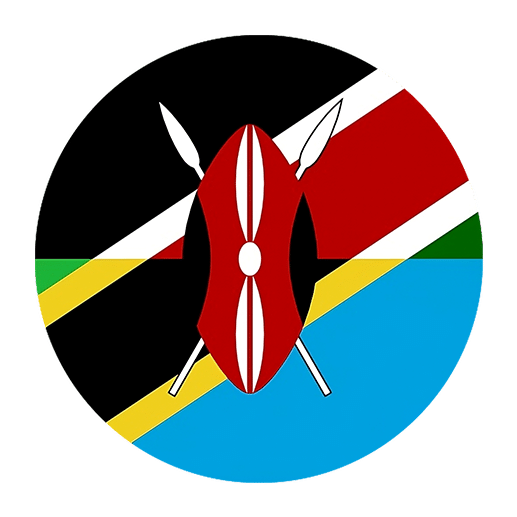Swahili, or Kiswahili as it is known in the language itself, is a Bantu language spoken by millions of people across East Africa, including in countries like Kenya, Tanzania, Uganda, the Democratic Republic of Congo, and Mozambique. It serves as a lingua franca in the region, bridging linguistic gaps between various ethnic groups. Understanding the relationship between Swahili and other Bantu languages provides valuable insights into the cultural and historical connections that bind communities together and can aid language learners in mastering Swahili more effectively.
Historical Context and Evolution
The Bantu languages form a branch of the Niger-Congo language family, comprising over 500 languages spoken by Bantu peoples spread across Central, Eastern, and Southern Africa. Linguists believe that the Bantu languages originated from a Proto-Bantu language spoken in what is now Cameroon. The Bantu migration, which began around 3000 BCE, led to the spread of these languages across much of sub-Saharan Africa.
Swahili emerged as a distinct language in the coastal regions of East Africa due to interactions between Bantu-speaking communities and traders from the Arabian Peninsula, Persia, India, and later Europe. This unique position as a trade language contributed to Swahili’s adoption of loanwords from Arabic, Persian, Portuguese, and later English and German. However, the core grammatical and syntactical structure of Swahili remains fundamentally Bantu.
Linguistic Features of Swahili and Other Bantu Languages
Swahili shares many linguistic features with other Bantu languages, making it easier for speakers of one Bantu language to learn another. These shared features include noun classes, verb conjugation patterns, and similar syntactical structures.
Noun Classes
One of the most distinctive features of Bantu languages is the noun class system. Nouns are categorized into different classes, each with its own prefix that affects verbs, adjectives, and other parts of speech within a sentence. Swahili has 18 noun classes, although some are rarely used in modern speech.
For example, in Swahili, the noun for “person” is “mtu” (class 1), and the plural “people” is “watu” (class 2). Adjectives and verbs must agree with the noun class:
– Mtu mzuri (a good person)
– Watu wazuri (good people)
This system is also present in other Bantu languages, such as Zulu, Xhosa, and Shona, although the number and specific prefixes of the noun classes can vary.
Verb Conjugation
Verb conjugation in Swahili is agglutinative, meaning that it involves adding prefixes and suffixes to a root verb to indicate tense, mood, subject, and object. This feature is common across Bantu languages. For example, the Swahili verb “kupenda” (to love) can be conjugated as follows:
– Ninapenda (I love)
– Unapenda (You love)
– Anapenda (He/She loves)
Similar conjugation patterns are found in other Bantu languages. In Zulu, for instance, the verb “ukuthanda” (to love) is conjugated as:
– Ngiyathanda (I love)
– Uyathanda (You love)
– Uyathanda (He/She loves)
Syntactical Structure
Swahili typically follows a Subject-Verb-Object (SVO) word order, which is common among Bantu languages. This syntactical structure makes it relatively straightforward for speakers of other Bantu languages to understand Swahili sentences. For instance:
– Swahili: Mimi ninapika chakula (I am cooking food)
– Zulu: Mina ngipheka ukudla (I am cooking food)
Despite variations in vocabulary and pronunciation, the underlying grammatical structure remains consistent, facilitating cross-linguistic comprehension.
Lexical Similarities and Differences
While Swahili shares many grammatical features with other Bantu languages, its lexicon has been significantly influenced by its history as a trade language. This has resulted in a substantial number of loanwords from Arabic, Persian, Portuguese, and other languages. However, the core vocabulary remains Bantu.
Core Vocabulary
Many basic words in Swahili are similar to their counterparts in other Bantu languages. For example:
– Swahili: Maji (water)
– Zulu: Amanzi (water)
– Shona: Mvura (water)
– Swahili: Nyumba (house)
– Zulu: Indlu (house)
– Shona: Imba (house)
These similarities can make it easier for speakers of one Bantu language to learn another, as they can often infer the meanings of unfamiliar words based on their knowledge of related languages.
Loanwords
Swahili’s extensive borrowing from other languages sets it apart from many other Bantu languages. For example, the Swahili word for “book” is “kitabu,” which comes from the Arabic “kitāb.” In contrast, the Zulu word for “book” is “incwadi,” which is derived from indigenous Bantu roots.
This borrowing extends to various domains, including religion, commerce, and technology. For instance:
– Swahili: Shule (school) – from German “Schule”
– Swahili: Polisi (police) – from English “police”
– Swahili: Haraka (fast) – from Arabic “ḥaraka”
While these loanwords have enriched Swahili’s vocabulary, they can pose challenges for speakers of other Bantu languages who may not be familiar with the source languages.
Cultural and Social Implications
The relationship between Swahili and other Bantu languages is not only linguistic but also cultural and social. Swahili has played a crucial role in fostering communication and unity among diverse ethnic groups in East Africa. Its status as a lingua franca has facilitated trade, education, and governance, contributing to regional stability and development.
Swahili as a Lingua Franca
Swahili’s role as a lingua franca has made it a symbol of national identity and unity in countries like Kenya and Tanzania. It is used in government, education, and media, providing a common platform for people from different linguistic backgrounds to communicate and collaborate.
For example, in Tanzania, Swahili is the medium of instruction in primary schools, ensuring that all children, regardless of their ethnic background, have access to education in a language they can understand. This policy has contributed to high literacy rates and social cohesion.
Cultural Exchange
The spread of Swahili has also facilitated cultural exchange and integration among Bantu-speaking communities. Swahili literature, music, and film have become popular across East Africa, promoting a shared cultural heritage.
Traditional Swahili poetry, known as “ushairi,” has roots in both Bantu and Arabic literary traditions, reflecting the language’s diverse influences. Similarly, Swahili music genres like Taarab and Bongo Flava incorporate elements from various cultures, creating a unique and vibrant cultural expression.
Challenges and Opportunities for Language Learners
For language learners, understanding the relationship between Swahili and other Bantu languages presents both challenges and opportunities. While the shared grammatical structures can facilitate learning, the differences in vocabulary and pronunciation require careful study and practice.
Leveraging Similarities
Language learners can leverage the similarities between Swahili and other Bantu languages to accelerate their learning. By focusing on the common grammatical features, learners can build a strong foundation that will help them understand and use the language effectively.
For example, mastering the noun class system in Swahili can make it easier to learn other Bantu languages, as the basic principles are transferable. Similarly, understanding the agglutinative nature of Swahili verb conjugation can provide insights into the conjugation patterns of related languages.
Addressing Differences
To address the differences between Swahili and other Bantu languages, learners should focus on expanding their vocabulary and improving their pronunciation. This can be achieved through immersive language practice, such as conversing with native speakers, listening to Swahili media, and engaging with Swahili literature.
Additionally, learners should pay attention to the loanwords in Swahili, as these words may not have direct equivalents in other Bantu languages. Understanding the origins and meanings of these loanwords can enhance learners’ comprehension and communication skills.
Conclusion
The relationship between Swahili and other Bantu languages is a testament to the rich linguistic and cultural heritage of Africa. While Swahili has been shaped by its unique history as a trade language, it remains deeply rooted in the Bantu linguistic tradition. For language learners, this relationship offers valuable opportunities to leverage shared grammatical features while also expanding their vocabulary and cultural understanding.
By appreciating the connections between Swahili and other Bantu languages, learners can not only master Swahili more effectively but also gain insights into the diverse and interconnected world of Bantu-speaking communities. Whether for personal enrichment, academic study, or professional development, learning Swahili opens doors to a world of linguistic and cultural exploration.

